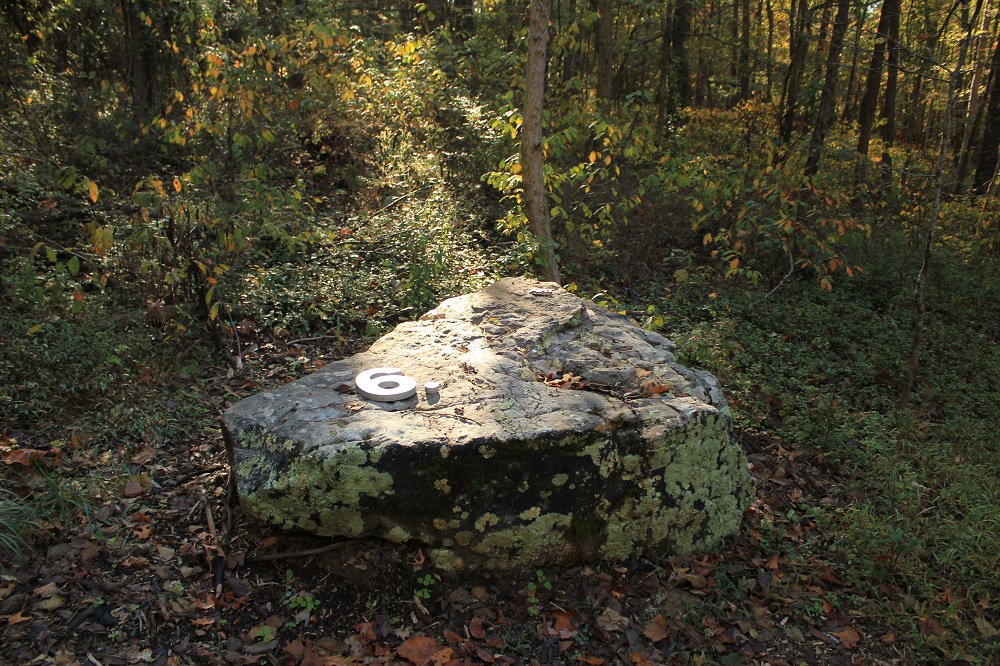If you have traveled any of Crystal Bridges trails, you have no doubt come across one of Robert Tannen’s enormous numbered boulders. The big rocks are part of an installation titled Grains of Sand, composed of 15 large boulders of native Arkansas stone, numbered and placed at specific sites around the grounds.
Each of the stones is visible from one of the trails, though not necessarily immediately trailside: one or two might require some looking to recognize. And looking is part of the point. “I wanted sites that were places people might want to stop and enjoy the landscape,” Tannen said. “And it makes the discovery more challenging.”
For the observant trail-walker, finding the stones becomes a sort of game. A practiced eye will soon be able to recognize them, like members of a family. Speckled with patches of gray-blue lichen, the stones range in weight from two to fourteen tons, and come in a variety of shapes. The title of the work references to the artist’s interest in the cosmological concept that all matter in the universe has its origins in the left-over material of exploding stars. Grains of Sand plays with the idea of the impermanence of human endeavor balanced with the endless cycle of renewal on a geological time scale. The rocks Tannen has chosen—at 250 to 500 million years old—were here long before humans evolved on the planet, and will presumably continue to be here long after we have disappeared.
In his artist statement about the work, Tannen refers to the ancient Greek myth of Sisyphus, who was condemned to endlessly push a boulder uphill, only to see it roll down again as he reached the top. “The boulder is a symbol for human toil in the face of the absurdity of life,” he writes “The result of selecting, moving, and placing the boulders of the Grains of Sand project reflects the joy of creativity born of human toil.”
A map of the Trails noting the location of each of the stones is available at the information kiosk in the Museum’s main lobby.






